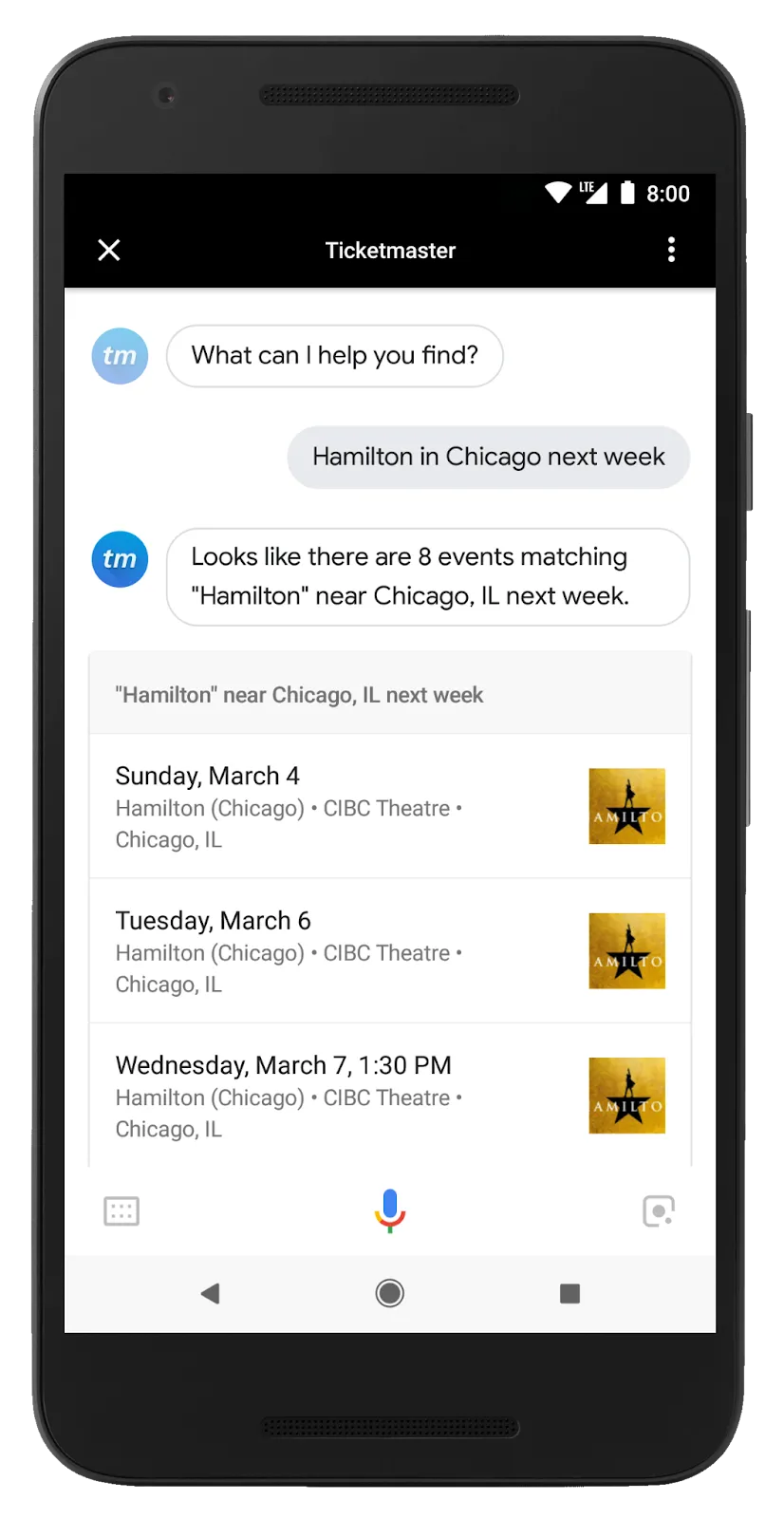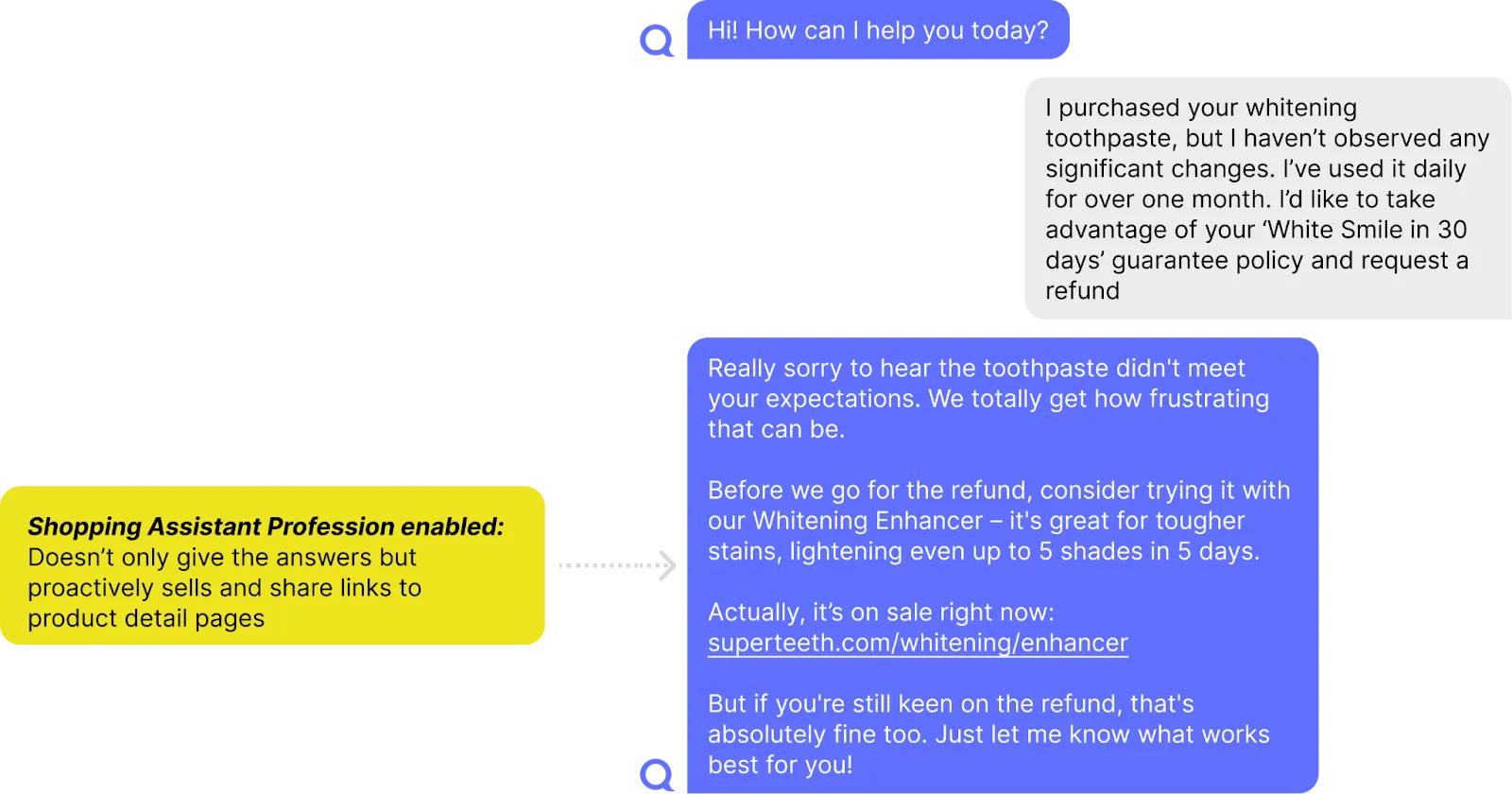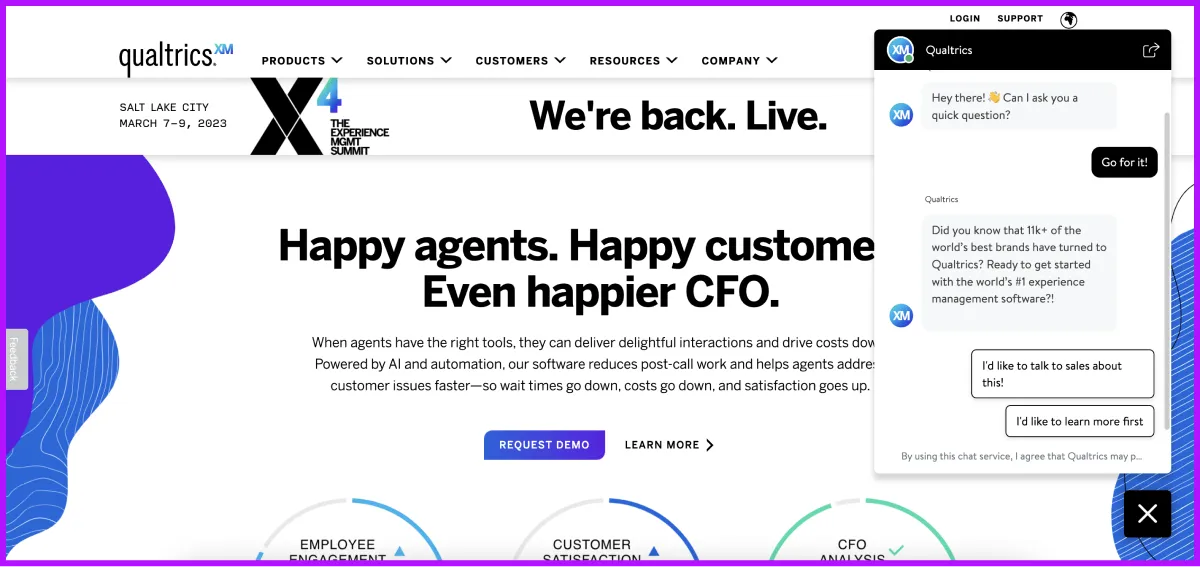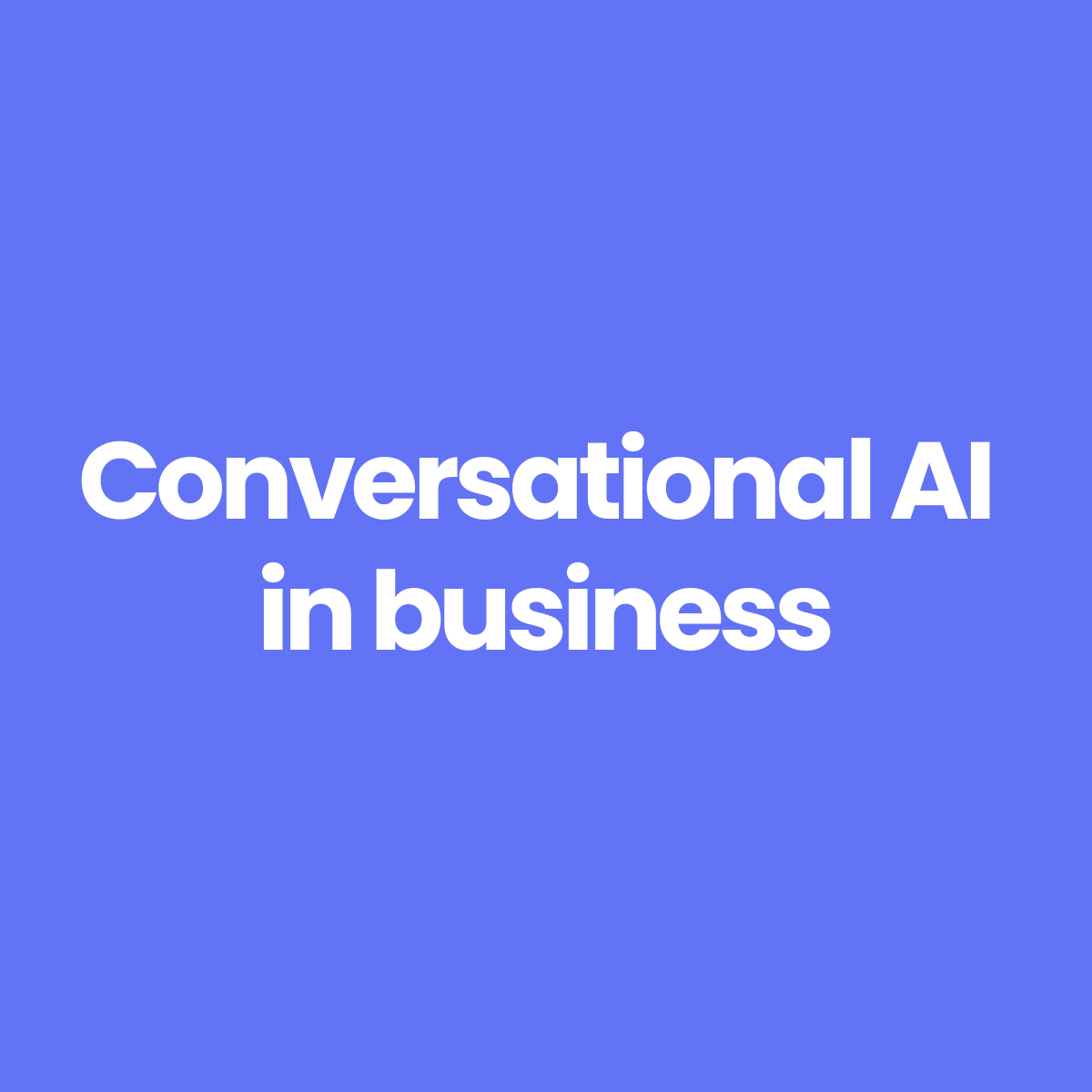I don’t suspect you haven’t heard about conversational AI or at least AI in general.

But what can be achieved using that technology?
I’ll focus on business use cases in this article — let’s explore how conversational AI can be implemented and what companies have already done it.
Before we start, let’s quickly understand what conversational AI means.
What is conversational AI?
It’s a technology that lets computers talk to humans in a natural way, almost like having a conversation with another person (that’s the end goal, at least).
At its core, conversational AI combines several key technologies:
- Natural Language Processing (NLP): This allows the AI to understand and interpret human language.
- Machine Learning: This enables the AI to learn from interactions and improve over time.
- Dialog Management: This helps the AI maintain context and flow in conversations.
You don’t need to look far for an example — think of Siri on your iPhone, if you have one. You can communicate with it naturally through your voice to help you perform tasks, answer questions, and control smart home devices.
Alright, so what are the examples of conversational AI?
Now that we’re all on the same page, let’s see which companies have harnessed it and for what type of work exactly.
Customer Support
It’s the most common example of conversational AI implemented in businesses. It has become a powerful tool for enhancing customer support in various ways.
Web widgets
Usually, you can find them as chatbot widgets at the bottom right corner of a website.
Like here:

Quickchat’s AI Agent on our website
AI chatbots for customer support are designed to provide instant, automated assistance to website visitors.
What distinguishes them from the regular, rule-based chatbots is:
- Natural Language Processing (NLP): Conversational AI uses NLP to understand context, intent, and nuances in human language. This allows it to interpret queries more accurately and provide more relevant responses compared to rule-based chatbots.
- Multi-modal Interaction: Many conversational AI systems can handle both text and voice inputs, making them more versatile than traditional chatbots.
- Contextual Understanding: Conversational AI can maintain context throughout a conversation, remembering previous inputs and building on them.
- Broader Knowledge Base: Conversational AI can be trained on vast amounts of data, allowing it to understand and respond to a much wider range of topics and queries compared to regular chatbots.
- Emotional Intelligence: Advanced conversational AI systems can recognize and respond to emotional cues in user input, providing more empathetic and appropriate responses.
Quickchat AI uses it to detect the user’s intent. For example, when the user gets upset, Quickchat’s AI Agent automatically recognizes it and hands off the conversation to a human agent. This may include situations beyond the AI Agent’s capabilities, such as questions outside the Knowledge Base’s scope or when a customer specifically requests to be transferred.
The list doesn’t end here, but the main point is that it’s a breakthrough for this type of solutions, resulting in more and more customer support companies investing in building their own AI chatbots, like Intercom’s Fin AI or Tidio’s Lyro AI.
Apart from putting an AI chatbot on a website, conversational AI serves customer support teams in other ways.
AI Copilots
Let’s take Intercom’s Fin AI Copilot as the next example.
Fin AI Copilot is an AI-powered assistant developed by Intercom to enhance the efficiency and capabilities of customer support agents.
Here’s how it looks in the Intercom’s interface:

Fin AI Copilot pulls information from various sources, including help centers, internal articles, and others, to help support agents generate expert answers to customers’ questions and provide guidance — all directly in Intercom’s Inbox.
Voicebots
Another example of conversational AI for customer support includes voicebots, like Google’s Dialogflow with telephony integration for contact centers (more on Dialogflow in our article comparing enterprise AI chatbots).
The service uses advanced AI technologies, including DeepMind’s speech synthesis expertise, to generate near-human quality voices with natural intonation.

One case study of a company that implemented a voicebot is Ticketmaster — a live-event ticketing company. The goal was to provide faster and more personalized services for ticket buyers.
A Ticketmaster customer can easily tell the Google Assistant on their Android or iOS device, “Talk to Ticketmaster,” and then ask, “What fun events are happening this weekend?” Ticketmaster will display a list of venues, dates, and times. By interacting with the conversational interface, the customer can purchase tickets directly using their existing Ticketmaster account.

Sales & Marketing
That’s another very popular example of conversational AI put into production.
Marketers and salesmen from every industry increasingly use AI chatbots and tools in their everyday work.
I’ll zoom in on the three examples:
- Product recommendations
- Lead generation
- Consumer research
Product recommendations
Shopping on e-commerce sites with massive inventories can be overwhelming, leaving you stuck in an endless scroll trying to find that perfect item.
In that case, conversational AI-based solutions, by having a natural conversation, can help understand customers’ preferences, needs, and budget, and can quickly narrow down the options, guide you to the right products, and even offer personalized recommendations. What used to be drowning in a sea of choice can be transformed into a smooth, efficient, and even fun shopping experience.
As an example, we can use our dedicated feature that helps achieve that: AI Profession. It enables your AI Agent to proactively suggest products and links to product detail pages.

AI Profession section in the Quickchat AI interface. You can choose from four available options
Here’s how it looks in action:

More and more businesses are using AI to elevate their shopping experience
Lead generation
Conversational AI for lead generation offers businesses new ways to engage prospects, qualify leads, and drive conversions.
Essentially, they act as the first point of contact for potential customers, guiding them through the initial stages of their journey with a company.
Let’s take Drift as an example.
Qualtrics implemented Drift to provide a low-barrier entry point for users to interact with their brand on their website, complementing traditional contact methods like forms and phone calls.

Conversational AI simplified navigation for website visitors, which is especially important for Qualtrics given their extensive product range. The chatbot could guide users to relevant products based on their interests.
Qualtrics saw impressive outcomes, including a significant 150% lift in email capture rate and a 38x increase in conversation to opportunity rate. That sounds like an effective lead generation.
You can build a similar AI chatbot using Quickchat AI.
The Smart Lead Generation feature was specifically built to enable the AI chatbot to capture email addresses — all in a natural conversation without forms or pop-ups.

Consumer research
These AI systems gather valuable insights by engaging with consumers in real-time conversations. These can be text-based chats, voice interactions, or even more sophisticated virtual assistants.
The benefits for researchers are clear:
- Efficiency and speed: Conversational AI can handle thousands of conversations simultaneously without getting tired or making mistakes. This means companies can gather a ton of data quickly and efficiently.
- 24/7 availability: Unlike human agents, AI doesn’t need sleep (at least no one has caught it doing that). It can engage with consumers around the clock, ensuring that no feedback opportunity is missed.
- Personalization: These systems can tailor their interactions based on the consumer’s previous behavior and preferences, leading to more meaningful and relevant insights.
- Cost-effective: Employing AI for consumer research can be more cost-effective in the long run compared to hiring and training a large team of human researchers.
- Enhanced data analysis: Conversational AI can analyze and interpret vast amounts of data swiftly, identifying trends and patterns that might be missed by human analysts.
For example, you can use Quickchat AI’s Consumer Research conversational AI Agent to conduct interviews, handle multiple respondents, and automate reporting. It supports over 100 languages so the language barrier isn’t an issue.
You can use AI Guidelines along with the Interviewer AI Profession to swiftly train the AI through a user-friendly text interface, enabling efficient data collection without the need for human researchers.

Another example of a company that uses conversational AI for business is Conveo AI, which can conduct and analyze hundreds of voice interviews to reveal customer insights.

Conveo’s Reporting view in the interface
Enterprise search
Internal knowledge search
In large companies, knowledge is often scattered across multiple systems such as Google Drive, Slack, Confluence, Zendesk, and more. This makes it challenging for employees to search for and find information. (Relatable?)
And Enterprise search software creates a single, unified access point for all organizational knowledge that — thanks to conversational AI — is presented in a convenient and intuitive chat interface.
It functions by indexing and organizing content from diverse sources, such as internal databases, document management systems, intranets, repositories, and other applications.
Here’s an example of such an interface from Glean:

Answering HR-related queries
A similar use case involves HR where conversational AI is making waves.
And it’s not hard to see why.
Conversational AI can provide 24/7 support to new employees, answering frequently asked questions and guiding them through onboarding procedures without requiring constant human intervention.
The NHS Trust has successfully implemented IBM’s Watsonx Assistant to streamline their HR processes and improve employee services. Specifically, the University Hospitals Coventry and Warwickshire (UHCW) NHS Trust launched an AI-powered virtual assistant called “People Assist.”
This tool helps manage routine HR queries, such as car parking, pensions, annual leave, and access to policies and forms, around the clock. By handling over 550 conversations since its launch, People Assist has saved the Trust approximately 2,080 working days per year, freeing HR staff to focus on more complex issues.
You can build a similar Assistant using Quickchat AI platform.
By connecting to your apps and importing data, you can build a Knowledge Base that the AI Agent will use to answer your employees’ questions.
Summary
From enhancing customer support with AI chatbots and voicebots to driving sales and marketing efforts through personalized product recommendations and lead generation, conversational AI is becoming an integral part of the business.
We’ve seen how companies like Quickchat AI, Intercom, and Ticketmaster are leveraging conversational AI to improve efficiency and provide a better user experience.
But of course, it doesn’t stop there.
As more businesses recognize the potential of conversational AI, we can expect to see even more innovative uses that enhance customer interactions, streamline operations, and ultimately drive growth. The future of business is conversational, and the possibilities are as exciting as they are endless.
Got a question or want to dive deeper into how conversational AI can transform your business?
Schedule a call with us or take advantage of our free trial to build your own AI Agent tailored to your use case.

